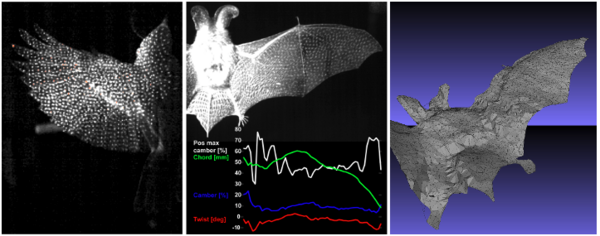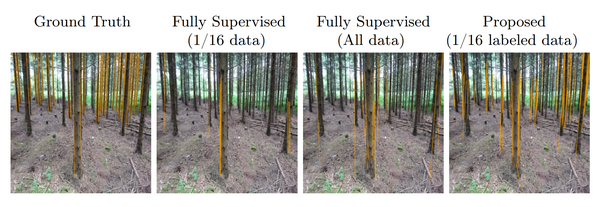Master's Thesis Suggestions
We offer master's thesis projects within the fields of computer vision and machine learning. Both at the division and in collaboration with other companies.
It is possible to contact: degree_project_CVML@math.lu.se for help with finding project or supervisor.
Master's thesis suggestions for the Centre for Mathematical Sciences can be found at: https://canvas.education.lu.se/courses/23335
Machine Learning for feature detection
Background
The need for feature detection in automated systems is substantial, for a machine to be able to navigate it must understand its environment. Today many large, and heavy, systems exist. However they only perform well in specific (indoor) scenes. What happens when we need a model for outdoor scenes but have limited amount of annotated data? To answer these types of questions we are working with semi-supervised learning, a method were one uses both annotated data and raw data to achieve better performance.
Developing ways to improve semi-supervised learning for line segment detection
We would like to look deeper into how to boost a machine learning algorithm for line segment detection. The aim is to add geometrical information via augmentation and look into different backbones and their affect on the accuracy.
This master theises project will have close connections to machine learning and image analysis.
Sounds interesting? Contact: Johanna Engman (johanna.engman@math.lth.se)
Bat wing shape estimation
A method for single shot 3D shape determination
We would like to develop a flexible method that uses multiple (>1) cameras and multiple dot-pattern-projecting lasers to accurately determine the 3D shape of objects that deform over time. The aim is to be able to study freely flying animals in our wind tunnel to determine the shape of wings and ears using high speed videos of the flying animals. The project involved two parts: First, developing an easy-to-use calibration routine. Second, developing a subpixel point tracking to generate high accuracy 3D point coordinates.
Background
When studying the aerodynamics of flying animals, it is highly relevant do determine the shape of deforming wings to understand how animals generate forces. To achieve this we have filmed the animals (bats and birds) using grayscale high speed videos (640-1000 Hz, 1x1 – 2x2 k resolution in a stereo configuration) while flying in our wind tunnel. At the same time we have projected a pattern using multiple lasers (fixed 150x150 dot pattern which is randomly filled at 25%, ~5600 red dots from each laser) onto the animals.
The goal is to be able to measure camber (the curvature of the wing profile) and twist (rotation from base to tip) of the wing surface, but also wing area and general descriptors of the motion. To achieve this we need to define the position of the edges of the wing as well as the surface. We also need to define the wing tip and wing base (preferably automatically).
Aim of project
To develop a calibration routine for the lasers. The current data lacks calibration images for the lasers and depending on how difficult the project should be the development of the calibration could either be based on specific calibration images or use the current stereo-image sequences of the animals to calibrate the lasers.
To identify which of the projected laser dots that belong to which laser and determine the position of the projected point.
Interested? Contact: Kalle Åström (karl.astrom@math.lth.se) or Christoffer Johansson (Christoffer.Johansson@biol.lu.se)


